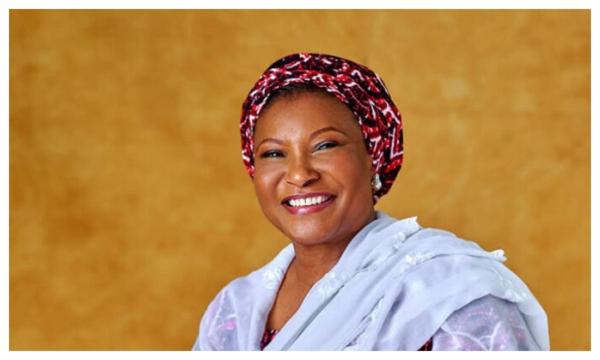
For the first time, the World Bank is providing some relief from bad news. In its latest report, the bank has come up with some fresh and positive data that the ambitious plan of wiping out poverty in another 15 years is achieveable. The report has predicted that the percentage of the people living in poverty will fall into a single digit before the year ends.
GOING by a projection by the World Bank, the number of people living in extreme poverty around the world is likely to fall below 10 per cent of the global population this year.
The cheery news, contained in the bank’s projections released at the weekend, gave fresh evidence that a quarter-century-long sustained reduction in poverty is moving the world closer to the historic goal of ending poverty by 2030.
The Bank uses an updated international poverty line of $1.90 a day, which incorporates new information on differences in the cost of living across countries (the PPP exchange rates). The new line preserves the real purchasing power of the previous line (of $1.25 a day in 2005 prices) in the world’s poorest countries.
Using the new line (as well as new country-level data on living standards), the World Bank projects that global poverty will have fallen from 902 million people (or 12.8 per cent of the global population) in 2012 to 702 million people (or 9.6 per cent of the global population) this year.
The actual poverty data from low income countries come with a considerable lag but the organisation, which released the information on the eve of its annual meetings in Lima, Peru, based its current projections on the latest available data.
World Bank Group President Jim Yong Kim said that the continued major reductions in poverty were due to strong growth rates in developing countries in recent years, investments in people’s education, health, and social safety nets that helped keep people from falling back into poverty.
He cautioned, however, that with slowing global economic growth, and with many of the world’s remaining poor people living in fragile and conflict-affected states, and the considerable depth and breadth of remaining poverty, the goal to end extreme poverty remained a highly ambitious target.
“This is the best story in the world today – these projections show us that we are the first generation in human history that can end extreme poverty,’’ Kim said.
He went on: “This new forecast of poverty falling into the single digits should give us new momentum and help us focus even more clearly on the most effective strategies to end extreme poverty. It will be extraordinarily hard, especially in a period of slower global growth, volatile financial markets, conflicts, high youth unemployment, and the growing impact of climate change. But, it remains within our grasp, as long as our high aspirations are matched by country-led plans that help the still millions of people living in extreme poverty.”
In April 2013, nine months after Kim became President, the World Bank Group’s Board of Governors endorsed two goals: to end extreme poverty by 2030 and to boost shared prosperity by raising the incomes of the bottom 40 per cent of populations.
Kim said that further reductions in poverty rates would come from evidence-based approaches, including: broad-based growth that generates sufficient income-earning opportunities; investing in people’s development prospects through improving the coverage and quality of education, health, sanitation, and protecting the poor and vulnerable against sudden risks of unemployment, hunger, illness, drought and other calamities. These measures, he said, would also greatly boost shared prosperity, improving the welfare of the least well-off in every country.
“With these strategies in place, the world stands a vastly better chance of ending extreme poverty by 2030 and raising the life prospects of low-income families,” said Kim.
Poverty concentrated in sub-Saharan Africa, South Asia
For the last several decades, three regions – East Asia and Pacific, South Asia and Sub-Saharan Africa – have accounted for some 95 per cent of global poverty.
Yet, the composition of poverty across these three regions has shifted dramatically. In 1990, East Asia accounted for half of the global poor, whereas some 15 per cent lived in sub-Saharan Africa.
By this year’s forecasts, the trend is almost exactly reversed. Sub-Saharan Africa accounts for half of the global poor, with some 12 per cent living in East Asia. Poverty is declining in all regions but it is becoming deeper and more entrenched in countries that are either conflict ridden or overly dependent on commodity exports.
The growing concentration of global poverty in sub-Saharan Africa is of great concern. While some African countries have seen significant successes in reducing poverty, the region as a whole lags the rest of the world in the pace of lessening poverty. Sub-Saharan poverty fell from an estimated 56 per cent in 1990 to a projected 35 per cent this year. Rapid population growth remains a key factor blunting progress in many countries – as this year’s Global Monitoring Report billed for launch on Thursday shows.
In its regional forecasts for 2015, the Bank said that poverty in East Asia and the Pacific would fall to 4.1 per cent of its population, down from 7.2 per cent in 2012; Latin America and the Caribbean would fall to 5.6 per cent from 6.2 in 2012; South Asia would fall to 13.5 per cent in 2015, compared to 18.8 per cent in 2012; Sub-Saharan Africa declines to 35.2 per cent in 2015, compared to 42.6 per cent in 2012.
A reliable current poverty data is not available for the Middle East and North Africa because of conflict and fragility in key countries in the region.
“Development has been robust over the last two decades but the protracted global slowdown since the financial crisis of 2008, is beginning to cast its shadow on emerging economies,” said World Bank Chief Economist Kaushik Basu, a former Chief Economic Adviser to the Indian Government.
“There is some turbulence ahead. The economic growth outlook is less impressive for emerging economies in the near future, which will create new challenges in the fight to end poverty and attend to the needs of the vulnerable, especially those living at the bottom 40 per cent of their societies,” Basu said.
Measuring poverty
globally and nationally
The updated global poverty line and rate are based on newly-available price data from across the world – impacting not only where the global poverty line is drawn, but the cost of the basic food, clothing, and shelter needs of the poorest around the world.
However, this global measure is only one of many important measures to track in order to better reach the poor and vulnerable.
“When global organisations set global goals, we have to be able to compare progress across countries using a common measure, treating the absolute poor in one country the same as in another,” Ana Revenga, Senior Director of the World Bank’s Poverty and Equity Global Practice said.
She added: “But just as important are the national poverty lines set by each country, reflecting their own standard of living. These are crucial for governments and policy makers when they are planning the programs that will improve lives, or the policies that will help bring the poorest in their country out of destitution.”
Revenga said the World Bank Group would continue to work with its country clients and partners to improve how it measures and tracks poverty, to build country statistical capacity and fill persistent data gaps and to integrate solid data and analysis into its development work to better reach people and their families who live in entrenched poverty.
Nigeria not on list of seven poorest nations
IF a report published yesterday in an Indian daily is anything to go by, Nigeria is not on the list of the seven poorest countries in the world.
Of the countries occupying the first seven positions on the extremely poor nations, six are African’s, with Afghanistan as the only country from Asia.
The publication came on the heels of a weekend prediction by the World Bank that the number of people living in extreme poverty will fall below 10 per cent before the end of the year.
According to the bank, about one billion people live in extreme poverty. In its latest report, the number of people who survive on Rs 125 a day will drop from 12.8 per cent to 9.6 per cent before the end of the year.
According to the organisation, the world poverty is moving closer to the goal of ending poverty by 2030.
Democratic Republic of the Congo
With the lowest Gross Domestic Product (GDP) per capita than any other country, Democratic Republic of Congo tops the list of poorest countries in the world. The civil war it went through has also made it the poorest. The nation also faces the problem of human rights.
Zimbabwe
Zimbabwe has a lower poverty rate and better social indicators than most African countries. Poverty is more common in rural areas (31 per cent) than in urban areas (10 per cent), and the majority of Zimbabwe’s poor population (88 per cent) live in rural areas.
Burundi
Burundi has a history of violence and troubles. Conflict has contributed to widespread poverty. Burundi ranks in 167th place among 177 countries on the 2007 UN Human Development Index, and seven out of 10 Burundians live below the poverty line. Per capita Gross National Income (GNI) in 2007 was $100.
Liberia
Liberia is still recovering from the effects of a 14-year civil war that ended in 2003. The civil war has left the country in a fragile state. More than 80 per cent of Liberians were surviving on less than $1.25 per day. The United Nations’ Food and Agriculture Organisation (UNFAO) classifies Liberia as a low-income and food-deficit country.
Eritrea
Eritrea’s economy is largely based on subsistence agriculture, and 60 per cent of the population relies for food and income on agricultural activities. The youngest independent country has an annual per capita income of $150. In 2001, 53 per cent of the country’s households fell below the poverty line, and 44 per cent of children under the age of five were underweight.
Niger
With a surface area of about 1.3 million square kilometres, Niger is one of the world’s least developed nations. Its population is more than 16 million and is growing at an annual rate of 3.3 percent. Niger was ranked at the 186th position in the 2013 Human Development Index of the United Nations Development Programme (UNDP). Seventy-six per cent of its people survive on less than $2 a day.
Afghanistan
Since the Soviet invasion, Afghanistan has been a centre of a series of conflicts that have continued for over 30 years. Forty-two percent of the country’s total population lives below the national poverty line. About 20 per cent of the people live just above that line and are highly vulnerable to the risk of falling into poverty.






















